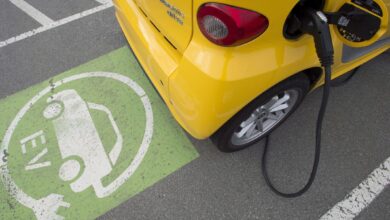How 1.5M new electric vehicles will affect the power grid through 2033

More than 1.5 million new electric vehicles. A near doubling of solar production. A fourteen-fold increase in electricity demand for heating.
Those numbers reflect the next decade in Massachusetts, according to ISO New England.
In an energy forecast published last week, the region’s power grid operator predicted a steady increase in electricity consumption in New England from now through 2033, to the tune of 17%, driven primarily by building and transportation electrification.
According to the report, Massachusetts will continue to lead the region in energy use (gigawatt-hours) in both heating and transportation.
“There (are) unprecedented changes going on to the power system in New England,” Victoria Rojo, lead data scientist on ISO New England’s load forecasting team, said in a video published with the report. “This presents a lot of challenges, but it also is extremely rewarding in that we get to, and have to, be pioneers of the mechanisms by which to deal with some of these issues going forward.”
Read more: Citing ‘progress’ at New England’s electric grid, politicians and advocates demand more
Worried your EV will run out of juice? Mass. plans to add more charging stations
Rojo said the general regional approach is a move away from traditional fossil fuel-fired furnaces and internal combustion engine vehicles toward heat pumps and electric vehicles.
“That’s going to lead to an increase in demand over time,” she said.
The energy transition is not occurring evenly across New England. While Massachusetts strives to meet ambitious nation-leading decarbonization goals — though not without challenges — New Hampshire remains the only state in the region without a statutory requirement to reduce greenhouse gas emissions, for example.
In December, the Maine Climate Council said the state was ahead of its heat pump installation goals, but momentum wasn’t translating equally to electric vehicle uptake.
Through 2033, according to ISO New England’s recent report, overall electricity use in New England is expected to increase from 119,179 gigawatt-hours to 140,001 gigawatt-hours.
Meanwhile, the grid operator predicts that energy efficiency programs, such as Mass Save, participating in the region’s wholesale electricity markets will reduce electricity use by 11,210 gigawatt-hours in 2033.
Recently, MassDOT announced a five-year, $63 million plan to install EV charging stations no more than 50 miles apart in an effort to reduce “range anxiety” and encourage the transition from gas-powered vehicles.
Transportation is the largest source of greenhouse gas emissions in Massachusetts, accounting for 37%, including light-duty passenger vehicles.



